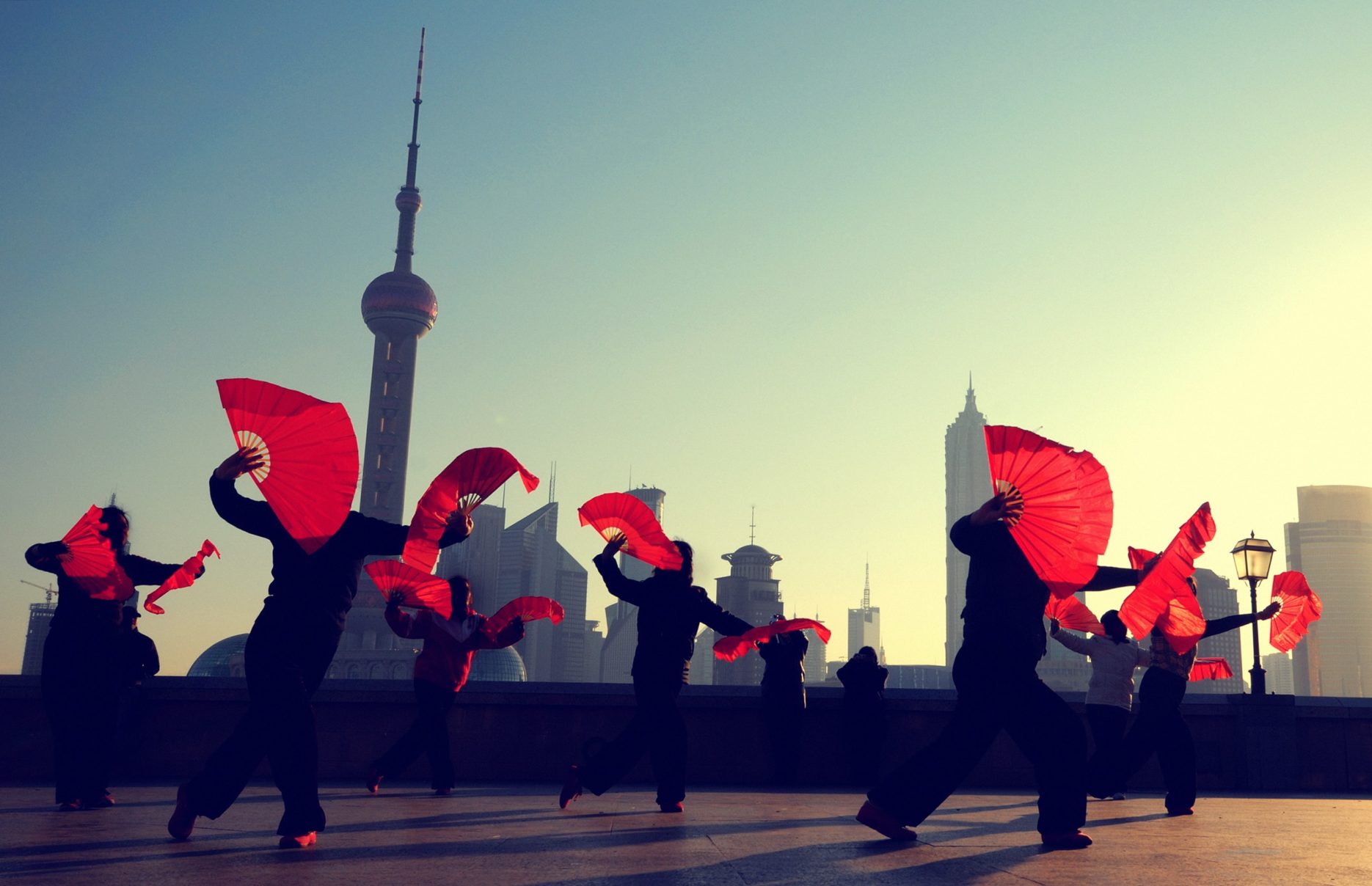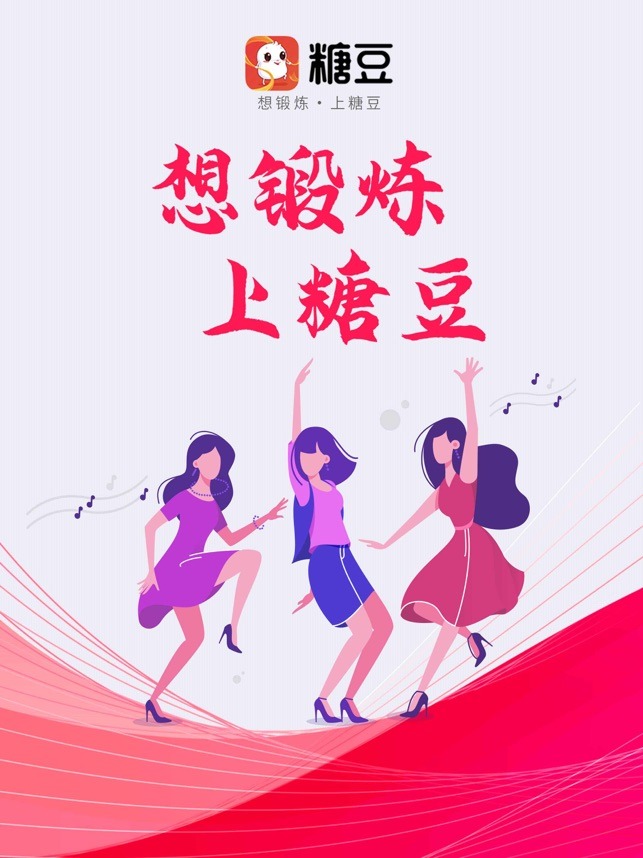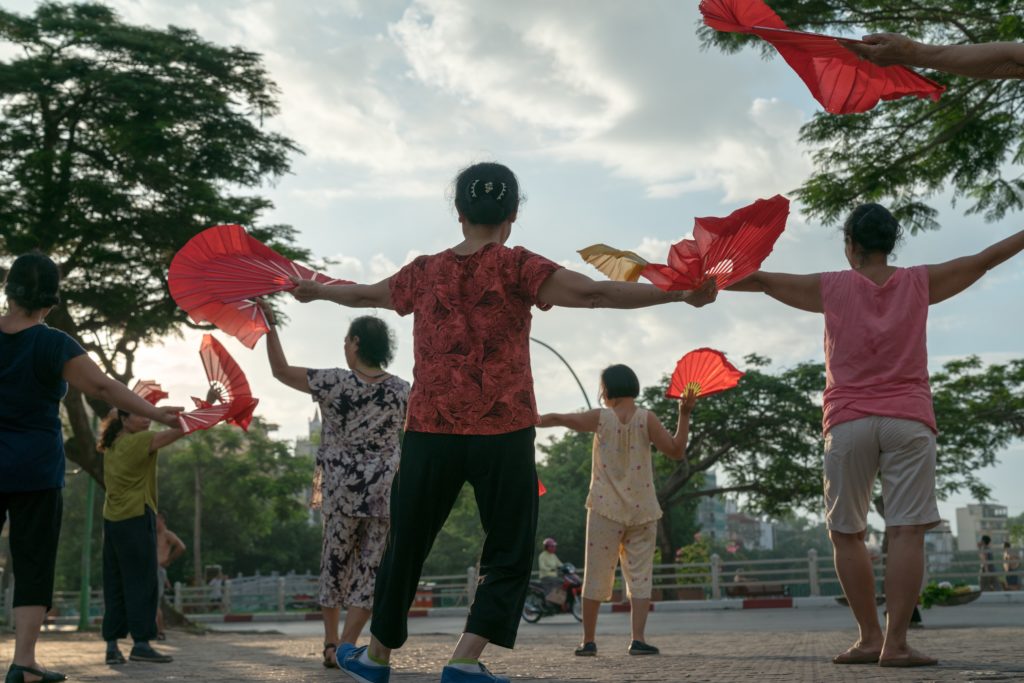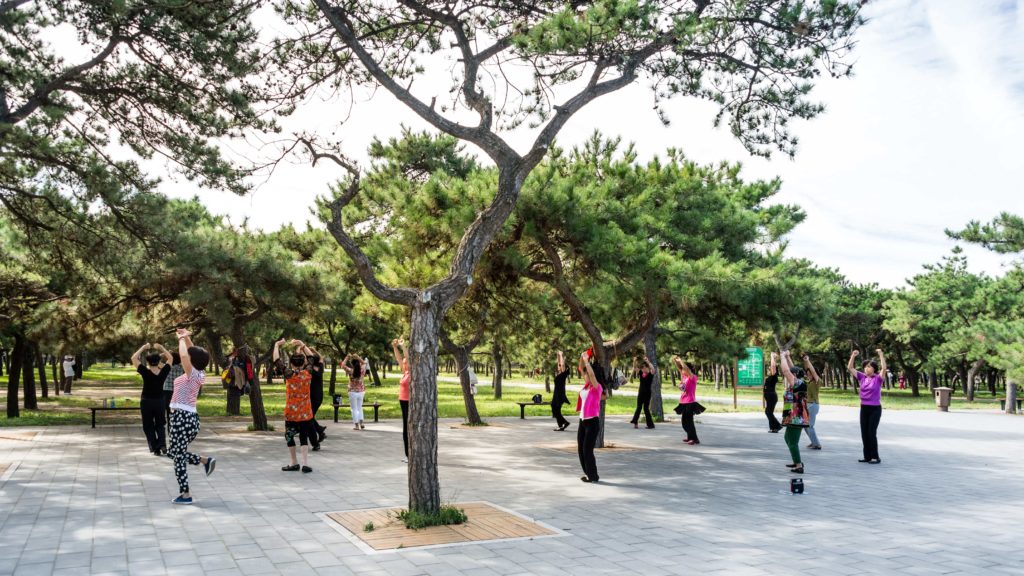Approximately 100 million people take over public squares and parks to dance everyday in China. Sometimes they are men or young people, but the majority of the participants are retired women born in the 1950s or 60s who have been dubbed the “dancing aunties” or “dama” (大妈 dàmā).
Approximately 100 million people take over public squares and parks to dance everyday in China.
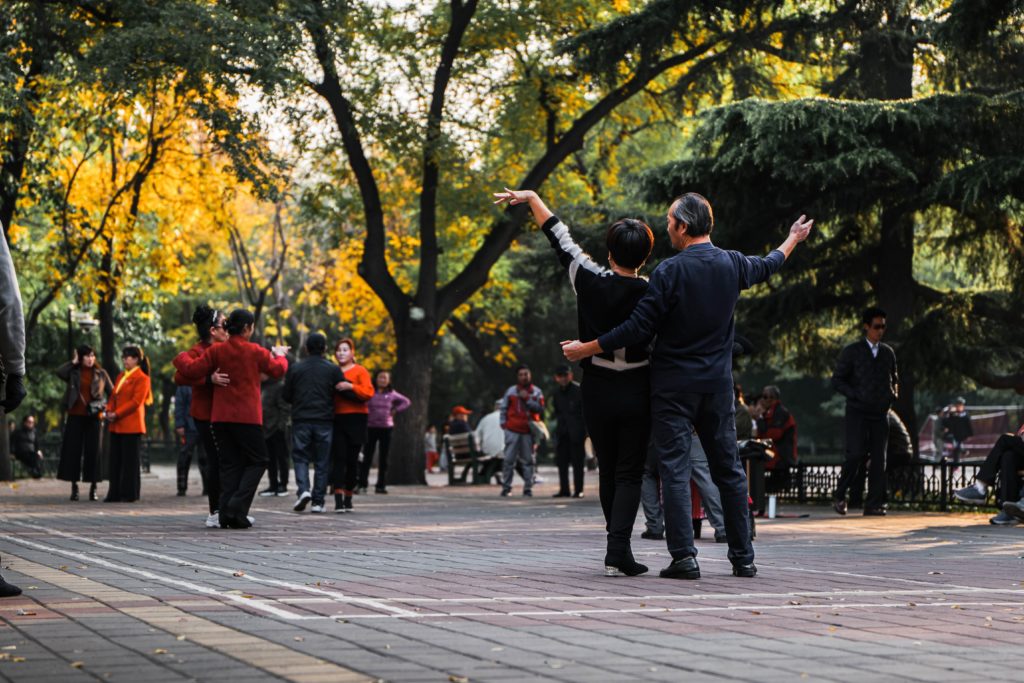
The history of dancing aunties
The phenomenon of the dancing aunties has been part of Chinese society for many years. Mass public dancing took root after the 1949 Communist revolution as the government organised communal activities to foster unity and loyalty to the Party. Fast forward to the present day, the activity remains a central part of many Chinese people’s lives and has promoted exercise and social networking. People who have travelled to China will know that seeing middle-aged and elderly women dancing in public is a common scene in cities and towns alike.
When I first encountered the dancing aunties, I was fascinated to see the older generation embrace life through dance.
When I first encountered the dancing aunties, I was fascinated to see the older generation embrace life through dance. Coming from London, where this would be seen as odd, I was delighted to see people of the older generation gathering together in public spaces to dance, from parks to even the outside of shopping malls. Observing elderly couples or groups of middle-aged women partaking in a range of dances (flamenco, tango, waltz and Chinese traditional dances) whilst walking through the park really did lift my spirits.
Physical and mental health benefits for elderly people
For me, this social phenomenon really gives an insight into Chinese culture and the importance it places on community, exercise and inclusion regardless of age. Loneliness and depression are very common among elderly people and this form of dancing is undoubtedly therapeutic and creates a sense of community.
With China’s ageing population growing rapidly and the population of over-65s estimated to be 330 million by 2050, these activities have reportedly benefited the health conditions of many elderly women, both physically and mentally.
Tangdou taps into the market for dancing aunties
Tangdou is an app targeted at middle-aged and elderly female dancers and has served more than 200 million users
Indeed it seems that that business and investors have already ‘cashed’ in on this phenomenon. Launched in 2015, Tangdou 糖豆 (which literally means sugar beans) is an app targeted at middle-aged and elderly women who like to dance in public. The app offers various services including free dance tutorials and a communication platform to connect dancers with their local community. Through its wealth of resources and attention to detail, such as ‘slow’ video playback, the app has been a hit with the elderly community and has served more than 200 million users since launching.
Further catering to the needs of the elderly, Tangdou has unveiled its own WeChat mini program for those who don’t usually download mobile apps. This is quickly becoming a very lucrative market and the Beijing-based company hopes to expand its offline business to cater to senior’s growing social needs.
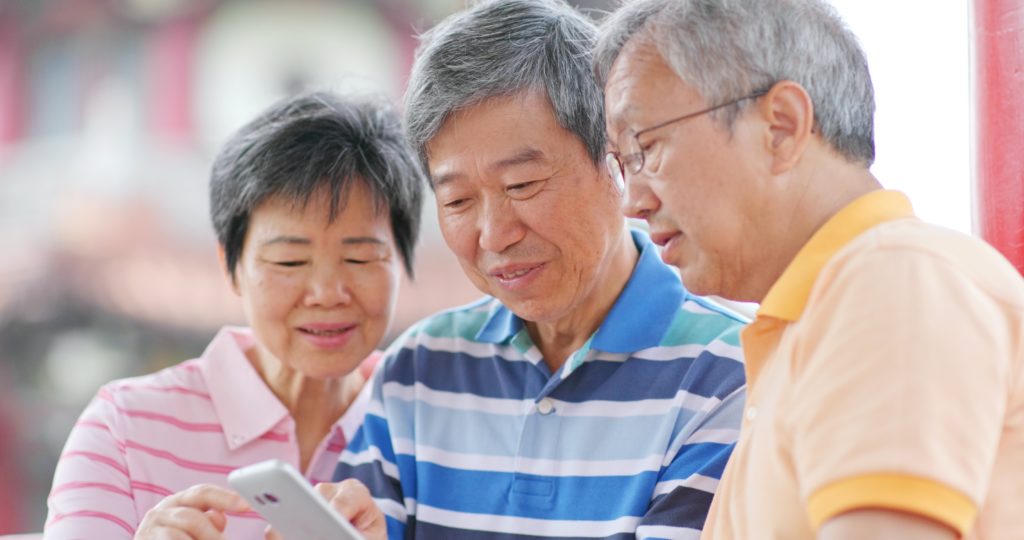
Tangdou has already established its own offline entertainment and communication platform Tangdou Home which has hosted more than 5,000 activities involving millions of dance lovers across the country.
This is certainly a market to keep an eye on in the future. The congregation of dancing aunties is not just a way for older people to socialise and exercise, it has also become an industry worth an estimated 1 trillion RMB. Social dancing has been encouraged by national competitions, such as China’s National Games, and this phenomenon will continue to boom in the future.
Dancing aunties face complaints
However, the dancing aunties have recently been subject to a backlash from the public. Many of the elderly participants wake up early to practice and a number of morning groups have received noise complaints by nearby residents. Some have reported public disruption and criticised dancers’ use of loudspeakers in the early hours. Consequently, the local government has threatened fines to individuals who play loud music during specified hours.
But this has not stopped them and some groups of dancing aunties have adapted! Last year, a group of middle-aged women in Chongqing (southwest China) earned enormous praise online for using earphones to listen to their music. Although the costs to the dance group organisers are high, using smartphones or MP3 players with earphones makes the activity more environmentally friendly by reducing the noise pollution.
Small-scale protests from the public haven’t stopped the dancing aunties… some have even welcomed new ways to keep their dancing spirit alive and will continue to do so!
Dancing aunties – a lesson for the West?
Having witnessed this phenomenon continually grow throughout the years in China, it is definitely one that Western communities could look to implement. Coming from the UK where this practice is unheard of, I believe it is a fantastic idea to raise the spirits of many lonely elderly people. There are no negatives to dancing: it is good for both the physical and mental health of the older generation. I hope more countries look towards China as, in this regard, they have clearly hit the nail on the head on how to keep their growing number of senior citizens happy and healthy.
If you enjoyed this article and want to contribute a piece to Dao, please get in touch with the team at [email protected]




